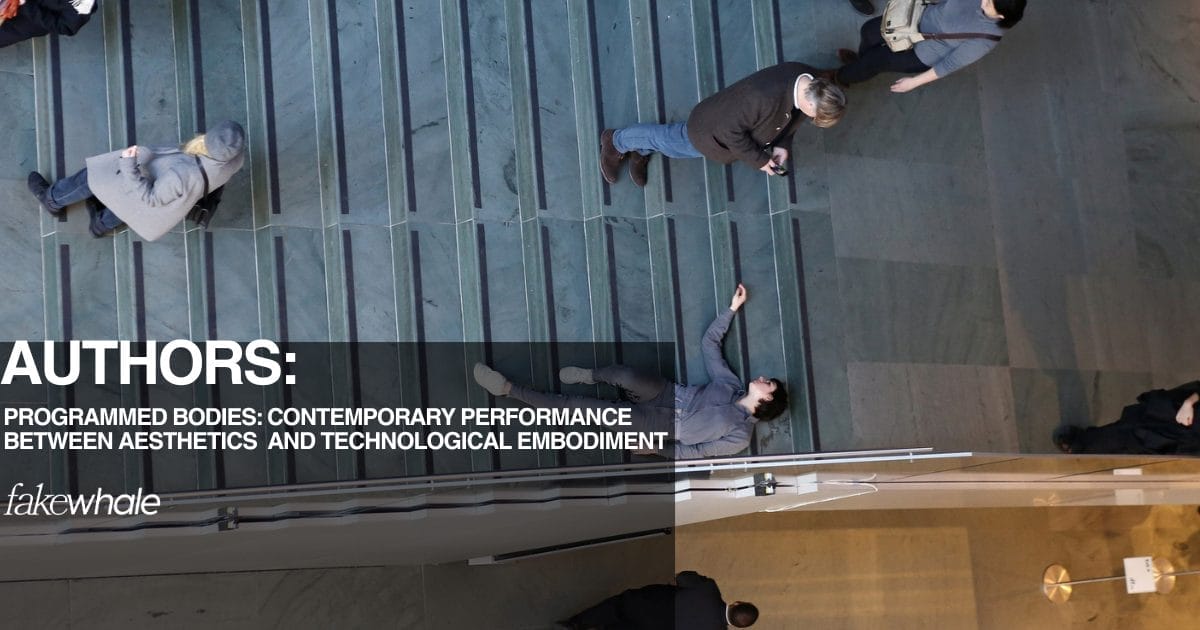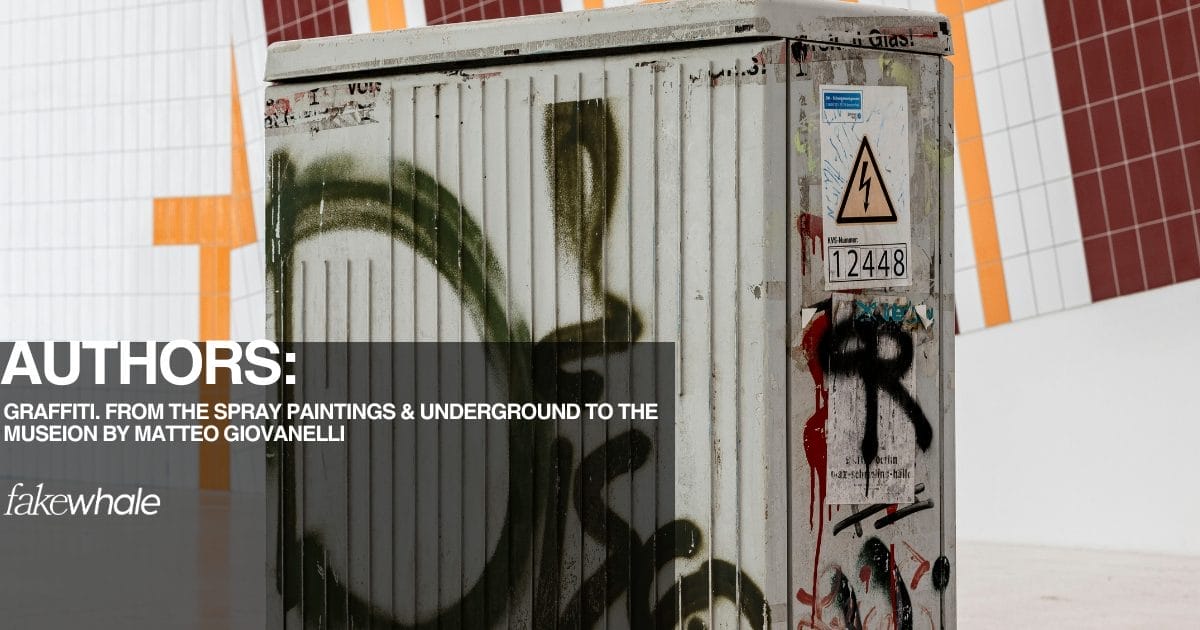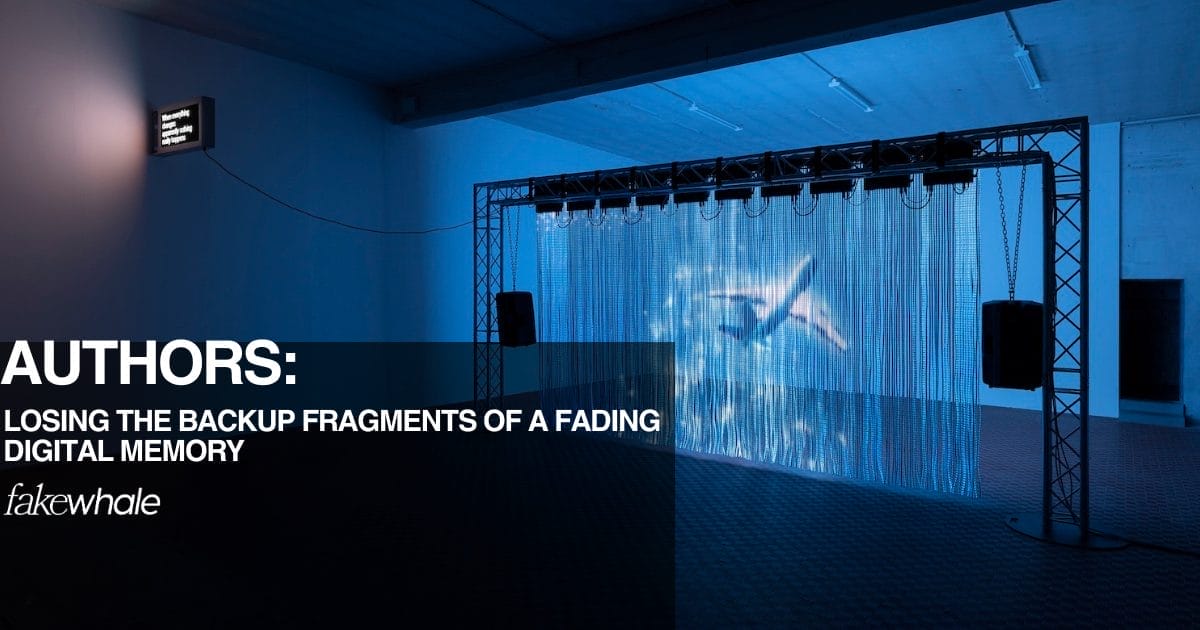In this issue, we’re pleased to feature an in-depth article by Fakewhale author Giulia Moscheni, which explores how contemporary performance art is being reshaped by digital aesthetics, technological embodiment, and the transformation of physical space into mediated, post-produced experience, as exemplified by works such as Rachel Monosov’s Liminal and Adam Linder’s Hustle Harder.
If one tries to access the website www.liminal.contact today, what appears on the blank page of our display is an error message. In my case, for example, it reads: “Safari can’t find the server,” followed by the standard browser language: “Safari can’t open the page ‘https://www.liminal.contact’ because it can’t find the server ‘www.liminal.contact’.” I remember that for a long time, that domain remained active: the link provided access to an online exhibition that redefined the perception of a traditionally physical space, transposed into a digital threshold. The exhibition consisted of three rooms, or perhaps, more accurately, sections, structured to virtually recreate the environments of Villa Massimo’s Gallery in Rome, which now took on the connotation of liminal spaces accessible exclusively via the web. The website www.liminal.contact was conceived as a platform hosting a specific event: the exhibition Liminal, created in 2020 following a residency by Russian artist Rachel Monosov, in collaboration with Accademia Tedesca Roma Villa Massimo and curated by Julia Trolp. (…)

Shelf Life Rehearsals, January 31, 2020, as part of Adam Linder: Shelf Life, The Museum of Modern Art, New York, February 01, 2020 - March 08, 2020. Performers: Angie Pittman, Justin Kennedy. Digital image © CURRENT YEAR HERE The Museum of Modern Art, New York. Photo: Denis Doorly
Often, the museum display, in its structure and aesthetics, not only shapes the perception of the artwork but actively conditions the behavior of the audience. In Linder’s performance, the inclusion of various mobile partitions referencing the museum infrastructure highlights the relationship between architecture and performers, now reduced to human interfaces programmed to respond to their surrounding environment. The white cube, once conceived as a sacred and enclosed space, now appears to be an aesthetic device actively involved in the construction of experience. (…)

Eliza Douglas in Anne Imhof, Faust, 2017. German Pavilion, 57th International Art Exhibition – La Biennale di Venezia. © Photography- Nadine Fraczkowski. Courtesy- German Pavilion 2017
In particular, everything seems to be functional to the great “camera” for which the entire setting is designed to be documented and photographed. And it is precisely by referring to Michael Sanchez that the American critic Claire Bishop speaks of a shift from the white cube to the blank page of the web, returning to the aforementioned example: “Today, the white cube may seem less a space for hosting physical visitors than a stage for taking photographs that circulate digitally on the clean white interfaces of Instagram, Twitter (now X), or the gallery’s website.” (…)

Rachel Monosov LIMINAL 2021 still from video performance work room 3 Courtesy of Galeria Catinca Tabacaru.
READ NOW ↓
AUTHORS

Authors' Insights explores experimental practices spanning sculpture, installation, video art, and transdisciplinary research. As part of the Fakewhale LOG, it provides writers, curators, and art professionals a platform to exchange perspectives, driving deeper engagement with contemporary critical discourse.
LATEST ARTICLES BY THE AUTHORS ↓
Are you a writer, curator, or art professional? Do you have a unique perspective to share or a critical reflection that could enrich the contemporary debate? Fakewhale invites you to contribute to the new “Authors Insights” section. Reach out at [email protected]
USEFUL LINKS:




